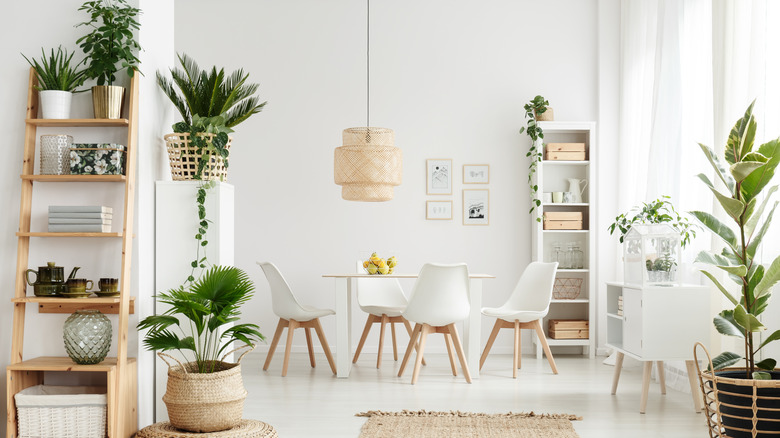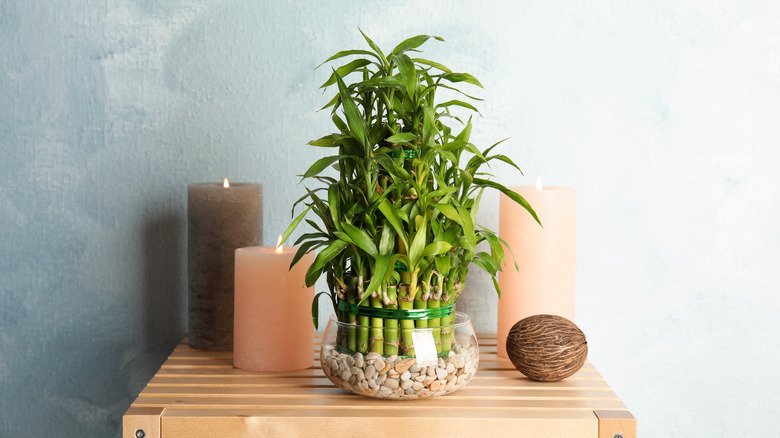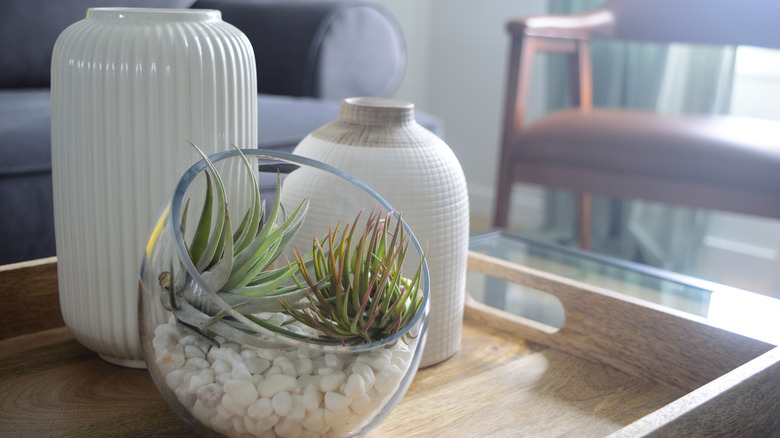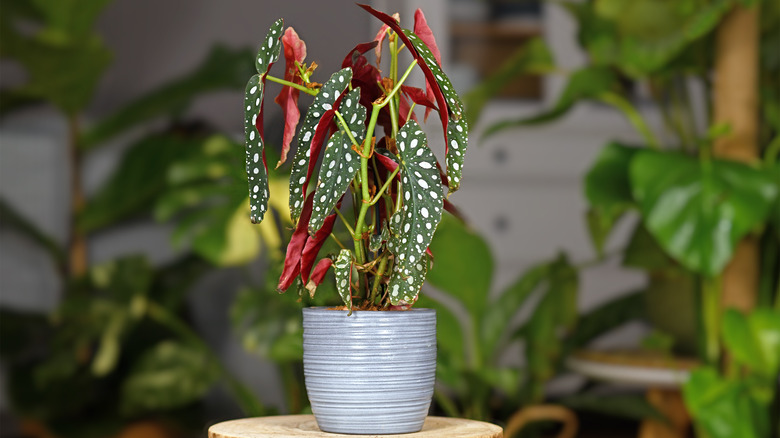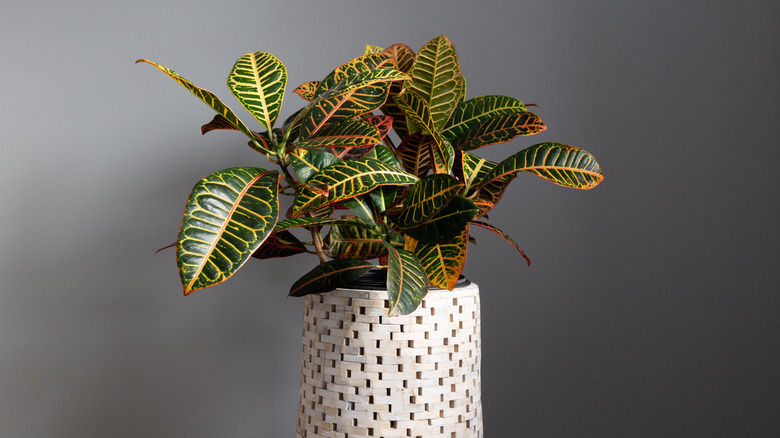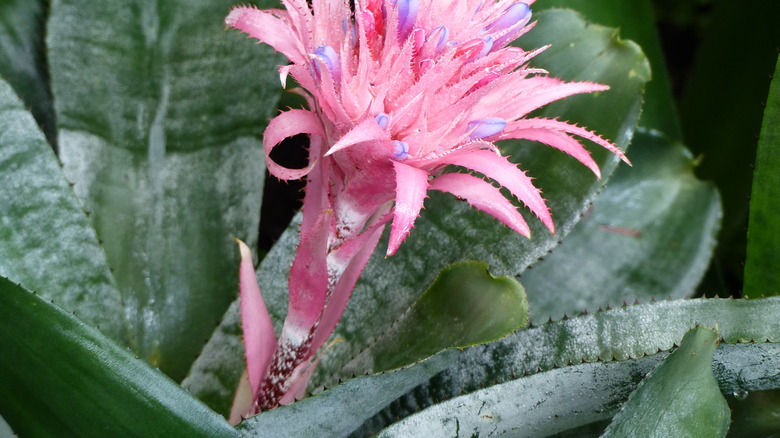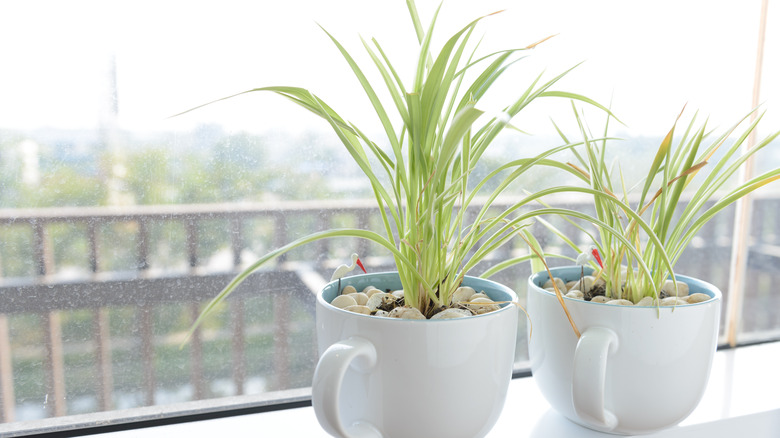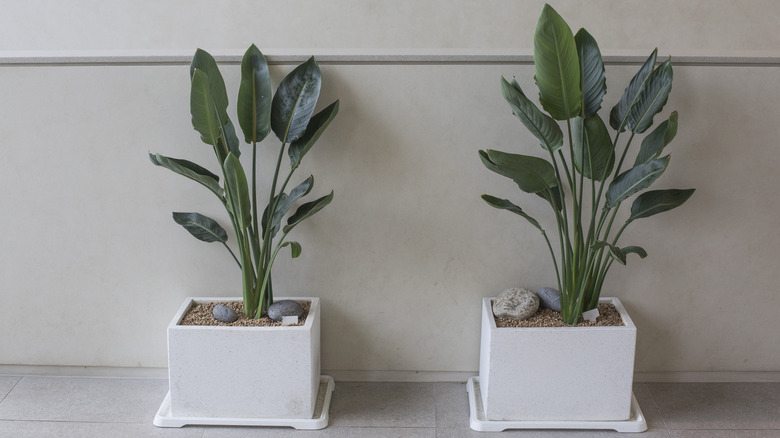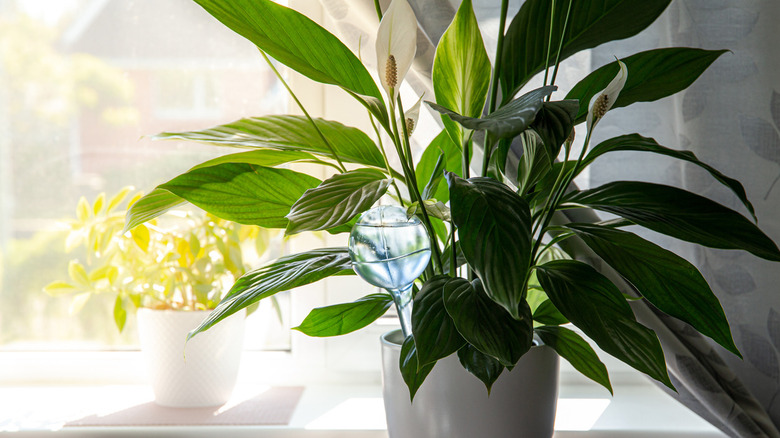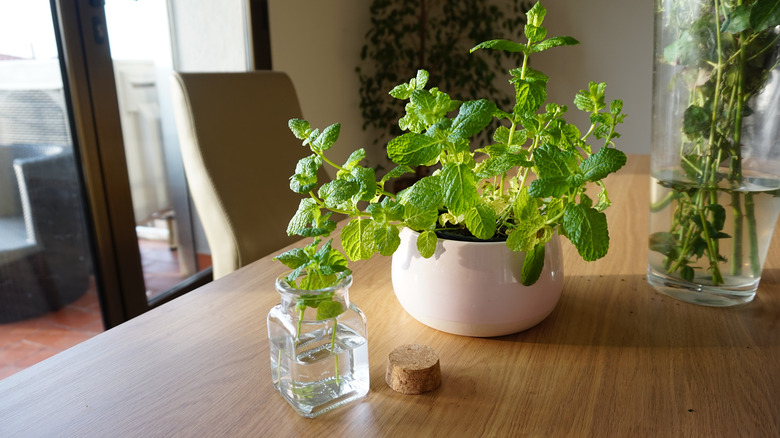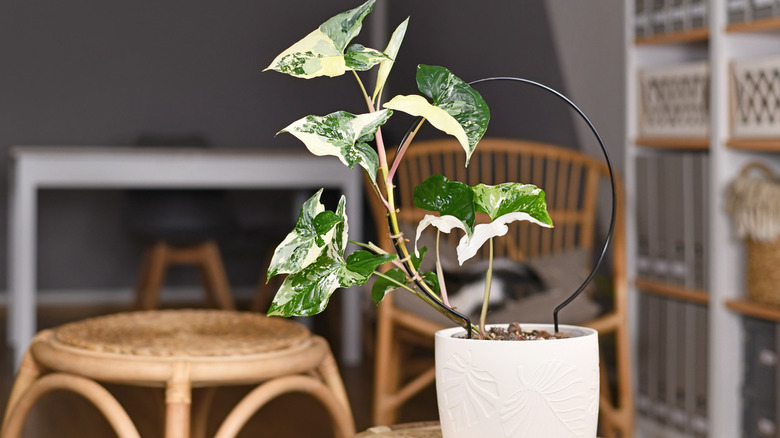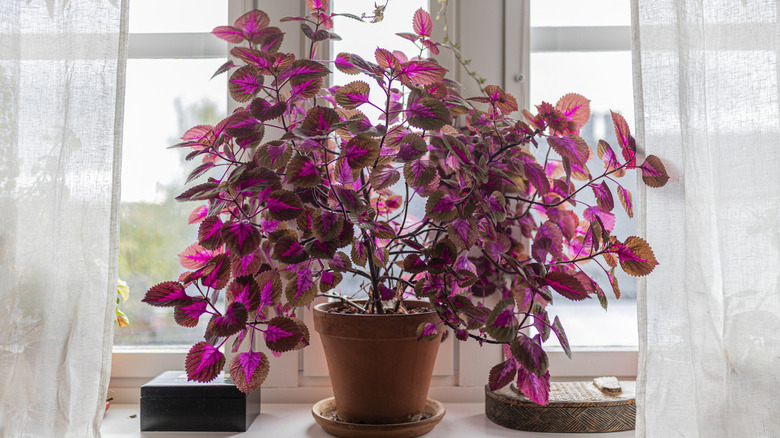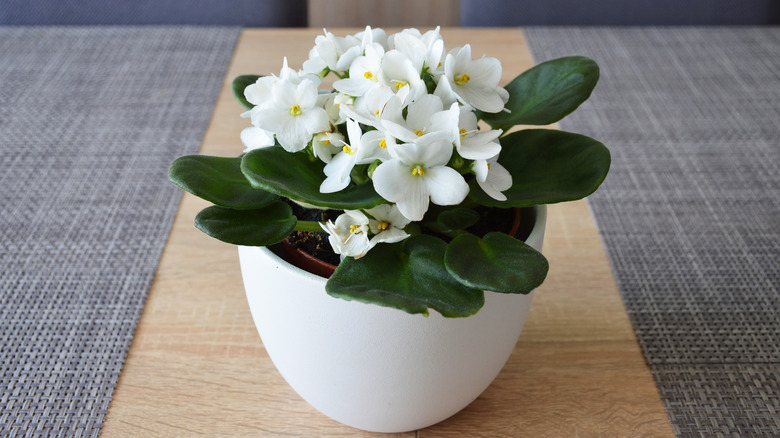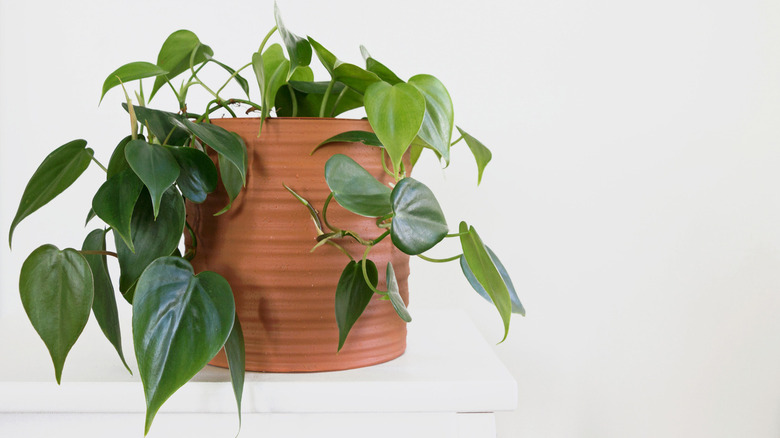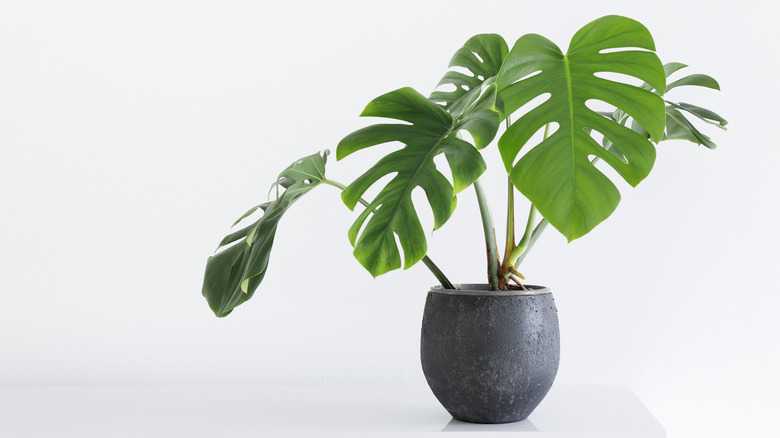The 15 Best Plants You Should Have In Your Dining Room
The dining room is a happy place for every family. It is where everyone gathers around to share delicious meals and have good conversations. Therefore, it only makes sense to make this space as beautiful and accommodating as possible. Sometimes bringing some greenery into your dining room is all it takes to breathe life into this room. You don't need an expensive makeover to make the dining room extra special; a nice houseplant is an inexpensive way of making the area look more intriguing. Every dining room deserves the beauty and health benefits of indoor plants. In fact, a study done by NASA shows that indoor plants go a long way in improving indoor air quality.
Picking the right plant for your dining room is not any different from selecting plants for any other room. You need to consider the specific plants, needs, the conditions in your dining area, and your personal experience with plants. Here are a few suggestions that will look good in your dining room.
Lucky bamboo
The lucky bamboo (dracaena sanderiana) is a common indoor houseplant that will look good on your dining table. This sculptural plant with braided stems is easy to grow and maintain. They are not picky when it comes to the type of soil. Heck, they can even grow in stone pebbles, provided there is water. Proflowers notes that when planting in the soil, be sure to keep it moist and not soggy. If you don't like braided stems, you can train your plant to grow straight stalks.
Air plant
Looking for a unique addition to your dining table, consider the air plant, also referred to as tillandsia. It makes for a beautiful display on the dining table, especially when potted in a glass container. Air plants are quite popular not only because of their cute and tiny appearance but also because they are low maintenance. Just as the name suggests, air plants do not need soil to grow. What's more, tillandsia needs regular watering when planted indoors. They thrive in bright filtered sunlight, notes Air Plant City.
Begonias
Popular for their colorful variegated leaves, begonias make excellent indoor plants for your dining room. There are plenty of ways of incorporating begonia plants in your dining room, for instance, in a pot or hanging from a basket. This is the type of plant that will reward you with colorful blooms or spectacular thick foliage when you take good care of it. They grow well in indirect sunlight and remember to water only after the topsoil dries out via Gardner's World. Try out the dotted begonia for extra visual appeal.
Croton
If you think only flowering house plants have the monopoly of color and beauty, then you haven't met croton (codiaeum variegatum) yet. This indoor house plant needs no flower to catch your eye; the compelling leaves are enough to steal the show in your dining room. The large beautiful leaves need enough warmth and sunlight for proper growth and color development. Ambius advises that you should keep the soil moist and not soggy. Since they are originally tropical plants, sit the pot on stone pebbles for better humidity.
Geraniums
Although common as an outdoor plant, geraniums adapt well indoors too. In fact, they are just the right plant to decorate the sunny window in your dining room. Unlike most plants, geraniums love direct sunlight Gardening Know How mentions that they should get at least eight hours of sunlight every day. When it comes to soil requirements, geraniums thrive in a well-drained loamy soil. Allow the soil to dry out before giving them another drink.
Silva vase plant
The silva vase plant (aechmea fasciata) is a sure attention grabber in your dining room. This plant features long wide leaves with a flower bract that appears after maturity. The beautiful flower bract lasts long, often from midsummer until late winter. Since the silver vase plant grows relatively slowly, you should consider buying a mature plant that is already flowering to experience the beauty of the pink bract. This plant grows well in moderate/controlled direct sunlight and moist, well-drained soil, according to House Plant experts.
Spider plant
Another popular indoor plant that will look great in your dining room is the spider plant (chlorophytum comosum). The narrow green leaves with white stripes grow long and droop beautifully over hanging baskets. Spider plants love growing in partial shade, preferably in moist, well-drained soil. They are not heavy feeders, however, Better Homes & Gardens advises that you should fertilize at least once a month. Other than beauty, spider plants also aid in improving indoor air quality.
Bird of paradise
Are you looking for a colorful indoor plant for your dining room? Consider the bird of paradise (strelitzia reginae). This indoor plant with large glossy leaves grows well under plenty of bright indirect sunlight. This is one plant that can tolerate direct sunlight for a short duration. Greenery Unlimited also mentions that you should allow the soil to dry out before watering. This beautiful plant is not picky when it comes to the type of soil. However, be sure to grow it in well-drained soil or potting mix.
Peace lily
The cool and inviting appearance of the peace lily (spathiphyllum) is what is missing in your dining area. The peace lily is an easy maintenance option for new plant parents and also children. This plant has large green leaves and produces white beautiful flowers. Peace lilies love medium-light environments but could also adapt in low-light settings. Gardening Know How notes that the glossy leaves attract dust and will need to be wiped at least every year. Water them only when the top soil dries out.
Mint
Quite an unconventional choice of plant, mint (mentha spp.) makes a great dining table plant not only because of the scent but also because it is edible. You can pluck a few leaves and put them in your tea for a refreshing taste. This herb can grow outside in the full sun but will also adapt to the bright filtered indoor light. They grow good in well-drained, moist soils and can be quite forgiving if you forget to water them for a couple of days, according to Savvy Gardening.
Arrowhead vines
Also referred to as syngonium, this tropical plant with arrowhead-shaped leaves is a true beauty. The variegated leaves with visible veins through the foliage introduce some unique charm to your dining room. Arrowhead vines are low maintenance provided you remember to water them at least once a week. They will tolerate low light but they do best under bright filtered sunlight. If your dining area is shaded with limited light, consider the green varieties as opposed to the variegated options, says Planterina.
Coleus
The stunning multicolored leaves of the coleus plants (Coleus blumei) are the true attention seeker. The red and golden hues are a reminder of the perfect sunset and set the tone for getting ready for dinner. There are plenty of leaf color options that will match your dining area decor. When it comes to care and maintenance, potted coleus plants require watering to keep the soil moist. They do best in rich, well-drained soils or potting mixes. While the coleus plant flowers during summer, Smart Garden Guide advises that you should allow it to flower to keep the plant alive for longer.
African violet
Although the African violet (saintpaulia) requires some care and attention, this small indoor plant will reward your dining area with cheerful blooms. The velvety leaves and the beautiful flowers definitely deserve a spot on your dining table. Before plunging ahead with this plant, be aware that you will need to keep the soil or potting mix moist. Also, do not splash water on the leaves; only irrigate at the base of the plant lest you risk folia damage, according to Garden Know How. They love bright filtered light for proper flowering.
Philodendron
You can never go wrong with philodendron in your dining room. Maintenance is a breeze; in fact, if you know what to look for, this plant will easily communicate its needs. Philodendrons easily adapt to different indoor conditions making them ideal for inexperienced plant parents. Ambius mentions that philodendrons have different light requirements depending on the leaf color. Deeper green leaves are more tolerant to bright indirect light. Also, remember to rewater only after the topsoil dries out.
Swiss cheese plant
The Monstera deliciosa is a popular plant that will look good in every room in your house, including the dining room. Since it is a relatively larger plant, it is a good choice for the floor decor in the dining space. The flat large, split leaves are what make this plant appealing to many people. In addition to the aesthetics, this plant is also relatively easy to maintain. It does very well under humid conditions and should be grown in moist soil. While it requires frequent watering in the initial growing stage, Gardenista cautions against over-watering and putting it under direct sunlight.
